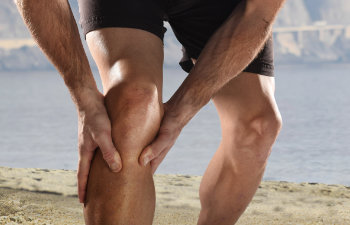
In the bustling rhythm of Manhattan, our bodies often take a backseat until they start to protest – and tight calves are one of those protests we can’t afford to ignore. At Manhattan Sports Therapy, we understand that the seemingly simple issue of tight calves can have wide-ranging implications for your overall well-being and physical performance. Let’s delve into what happens when your calves get tight and why it’s important to address this common yet often overlooked issue.
1. Reduced Mobility and Flexibility
Tight calf muscles can significantly limit your range of motion. This reduction in flexibility can affect your ability to perform daily activities and can lead to a less active lifestyle. Simple tasks like climbing stairs or even walking can become more challenging.
2. Increased Risk of Injury
One of the more serious consequences of tight calves is the increased risk of injury. Tight muscles are less pliable and more prone to strains and tears. For athletes and active individuals, tight calves can lead to a higher risk of injuries such as Achilles tendonitis, shin splints, and calf strains.
3. Altered Gait and Posture
Your body is a master at compensation. When your calves are tight, you may unconsciously alter your walking and running patterns to avoid discomfort. These alterations can lead to a chain reaction of imbalances and misalignments in your posture, potentially causing pain and issues in other areas like your knees, hips, and lower back.
4. Impact on Athletic Performance
For the fitness enthusiasts and athletes in Manhattan, tight calves can be a significant hindrance. They can limit your ability to perform at your best, whether you’re running, jumping, or engaging in any activity that requires lower body strength and flexibility.
5. Circulatory Problems
The calf muscles play a crucial role in aiding blood circulation, especially in pumping blood back to the heart from the lower extremities. Tight calves can impede this process, leading to problems like swelling in the feet and ankles, and in severe cases, contributing to circulatory disorders.
6. Trigger Points and Referral Pain
Tight calf muscles often develop trigger points – tender knots in the muscle tissue that can cause pain elsewhere in the body. This referred pain can be misleading and may result in addressing symptoms rather than the root cause – the tight calves.
How to Address Tight Calves
At Manhattan Sports Therapy, we advocate a proactive approach to managing tight calves:
- Regular Stretching: Incorporate calf stretches into your daily routine, especially after physical activities.
- Proper Footwear: Wear shoes that provide adequate support and cushioning.
- Massage and Myofascial Release: Techniques like foam rolling can help release muscle tightness.
- Professional Assistance: For persistent issues, seek help from a sports therapist who can provide tailored exercises, advice, and treatment options.
Don’t Let Tight Calves Hold You Back
Tight calves might seem like a minor annoyance, but they can be an indicator of deeper issues that can affect your quality of life and physical performance. At Manhattan Sports Therapy, we are dedicated to helping you understand and address the root cause of such issues, ensuring that your calves – and the rest of your body – are functioning harmoniously. Remember, taking care of your calves is not just about alleviating discomfort; it’s about maintaining your overall health and mobility. Let us help you keep those calves in check and you moving freely through the streets of Manhattan!
Posted on behalf of
635 Madison Ave, 4th Floor
New York, NY 10022
Phone: (212) 310-0100
Email: sportstherapy150@icloud.com


